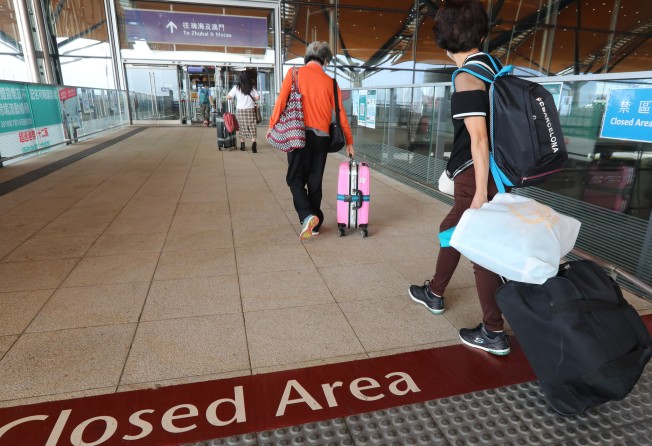Hongkongers need to see light at the end of the Covid-19 tunnel
- The opening of the mainland China border should be the catalyst for the lifting of other restrictions, rather than a justification for keeping them in place

The opening of Hong Kong’s border with the mainland has, until recently, appeared to be mission impossible. The city has not had a community outbreak of Covid-19 for months. But this, alone, was not enough to convince Beijing it was safe to allow quarantine-free travel from Hong Kong.
Now, the long-awaited lifting of restrictions is on the way. The plan is to start with a limited number of travellers and gradually increase the flow if all goes well. The opening-up is expected to begin this month.
It would be the perfect Christmas present for those who need to visit the mainland. Demand will be high, with 187,000 quickly signing up for the required new health code.
Most crossings were closed in February last year, in the early days of what was to become a global pandemic. The aim at that time was to stop the new coronavirus crossing the border into Hong Kong. That concern quickly eased. Instead, the issue became one of securing the approval of mainland authorities.
Opening the border has long been the government’s priority. Beijing finally gave the green light this month following a visit by mainland inspectors. The move will come as an immense relief to the tens of thousands who depend on cross-border travel for business, education, or family contact.
But now this elusive goal has been achieved, the question to ask is: What next?
The city has some of the world’s strictest quarantine rules for arrivals from overseas. Meanwhile, stringent social-distancing requirements continue to have an impact on everyday life. These measures were considered necessary to secure the opening of the border. Now that has been done, a broader view is needed.
The problem is that the conditions for quarantine-free travel to the mainland have not changed. A community outbreak in Hong Kong would quickly see the border closed again. The government, therefore, is likely to keep current measures in place.
There is no sign of that position changing in the near future. A mainland health official warned last week the country’s zero-tolerance strategy would stay until at least spring. It is likely to last much longer than that.
This is a depressing thought. Many residents have friends and family elsewhere in the world. Much of the business sector relies on overseas ties. Hong Kong’s status as an international city is diminishing.
And for residents, the limits on outdoor gatherings and events add to the feeling of being trapped and frustrated.
It is not just the expat community that is feeling the pain. A survey published last week asked respondents to rate their level of comfort with a strategy of “living with the virus”. More than two-thirds gave a rating of seven or more out of 10. Hong Kong people are growing tired of the “zero case” approach.
We need to be able to see light at the end of the tunnel. A road map is required, setting out the conditions for easing restrictions. What proportion of the population needs to be vaccinated before quarantine rules can be relaxed? What steps will be taken to ensure that level is reached? How many months must the city go without a community outbreak before limits on public gatherings are loosened?
The spread of the Omicron variant and the uncertainty it has caused reminds us that Covid-19 remains a threat. New challenges will, no doubt, emerge. But Hong Kong must find a way of ending its relative isolation from the world and strike a better balance between the zero case strategy and living with the virus.
The opening of the mainland border has been achieved through the sacrifices of Hong Kong people. The price has been paid in grim weeks spent in quarantine, split families, and a sense of life not being lived to the full. Now, we need to see that this landmark will be a catalyst for the gradual lifting of other restrictions, rather than a justification for keeping them in place.